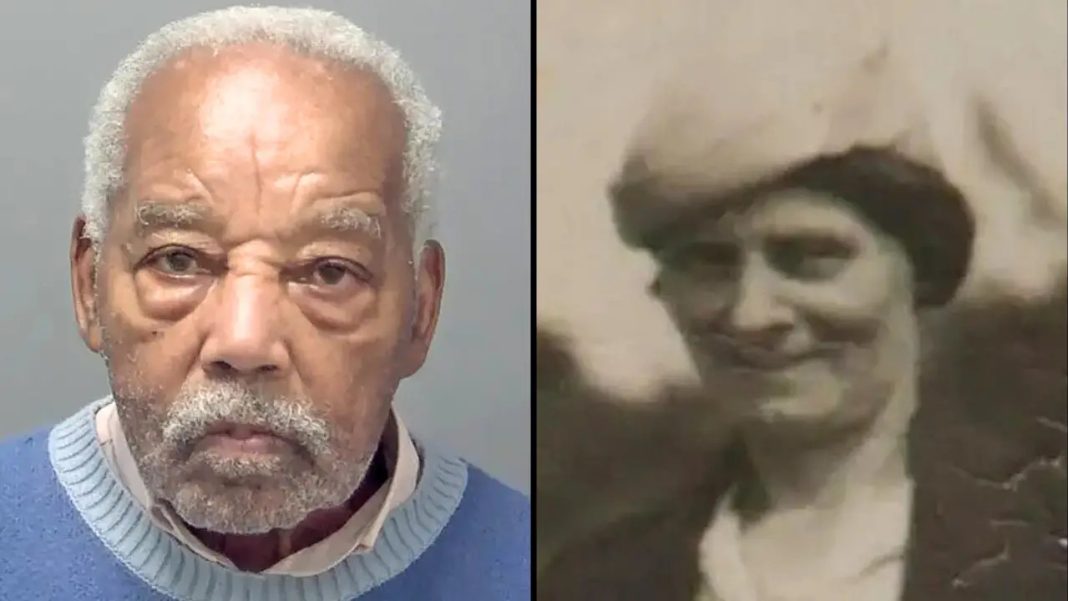Historic Cold Case Murder Conviction: A Breakthrough After 56 Years
In a haunting reminder of the past, a 92-year-old man has been found guilty of the murder and sexual assault of a woman whose life was tragically cut short over half a century ago. This case, which remained unsolved for a staggering 56 years, has recently made headlines following the conviction of Ryland Headley for the brutal crime committed against 75-year-old Louisa Dunne in Bristol on June 28, 1967. The story of how this cold case was finally cracked is both chilling and illuminating, demonstrating the progress made in forensic science and law enforcement techniques over the decades.

The Discovery of Louisa Dunne’s Body
On that fateful day in June, Louisa Dunne was discovered dead on the floor of her home located on Britannia Road in Easton. A concerned neighbor, noticing that her newspaper had not been collected, took it upon themselves to check on her, only to find a scene that would haunt the community for years to come. The elderly woman had been strangled, and despite the extensive investigation that followed, law enforcement was unable to identify a suspect. A significant effort was made, with detectives collecting 19,000 fingerprint samples, conducting 8,000 house-to-house visits, and obtaining 2,000 statements from local residents; however, the case ultimately went cold.

A Remarkable Turn of Events
Fast forward to 2023, when the Avon and Somerset Police decided to revisit the cold case, leveraging modern advancements in forensic science. The detectives’ efforts bore fruit when they tested a DNA sample taken from a sexual assault swab during the original investigation. The breakthrough came when the DNA evidence matched that of Ryland Headley, a convicted sex offender who had been residing in Ipswich. Born in the era of the crime, Headley was in his 30s at the time of Louisa’s tragic demise. This remarkable turn of events has reignited interest not only in this case but also in the broader implications for unsolved murders across the country.
Headley’s Criminal Background
Ryland Headley’s criminal history is deeply troubling, as it includes convictions for the sexual assault of two elderly women in 1977, aged 84 and 79, in Suffolk. These previous crimes were described by law enforcement as eerily similar to the brutal attack on Louisa Dunne. Such a pattern raised alarms among the investigators who were determined to uncover the truth after decades of silence. Detective Inspector Dave Marchant, who oversaw the investigation, labeled Headley as a “dangerous serial offender” with a “shocking and abhorrent history.” His chilling description underscored the urgency and significance of finally bringing justice to Louisa Dunne’s memory, and it raised questions about how such offenders might have evaded justice for so long.
Prosecutorial Efforts and Trial Outcomes
During the trial at the Bristol Crown Court, the prosecution laid out a harrowing narrative, asserting that Headley had broken into Dunne’s home, sexually assaulted her, and then strangled her to death. The emotional weight of the evidence presented was palpable, particularly for the investigators who spent years grappling with the unsolved mystery. Eyewitness accounts also offered insight into the night of the crime. Some neighbors reported hearing a “frightening scream” that echoed through the Easton neighborhood, a testimony that haunted them as they recalled that evening’s events. This forensic re-examination of the scene, coupled with modern techniques, painted a vivid picture of the tragic circumstances surrounding Dunne’s murder.
A Legacy of Pain and Closure
While the conviction of Ryland Headley may mark a significant milestone in the realm of unsolved cases, it also serves as a stark reminder of the devastating impact of violent crime. Louisa Dunne, a woman who had already been widowed twice, was known in her community as a friendly and familiar face. Her tragic end not only affected her family but left an indelible scar on the neighborhood she called home. The sense of closure provided by the recent conviction is bittersweet; while justice has finally been served, the loss of life remains a heavy burden. Furthermore, this case highlights the long-lasting effects such violence can have on communities, instilling fear and uncertainty that linger long after the incident.
Reflecting on Advances in Forensic Science
The successful resolution of Louisa Dunne’s case showcases how advancements in forensic technology can breathe new life into cold cases that have languished for decades. The ability to retest old DNA evidence is a game-changer in law enforcement, providing a pathway for justice that was previously unimaginable. As forensic techniques evolve, so do the opportunities for law enforcement to tackle their backlog of cold cases. As Detective Inspector Marchant noted, this case represents “a marrying of old school and new school policing techniques,” emphasizing the importance of evolving methods in the quest for justice. This fusion of traditional investigative work with cutting-edge technology inspires renewed hope for those seeking closure in similar unsolved cases.
Looking Ahead: Implications for Cold Cases
The implications of this case extend beyond just one conviction; they highlight the potential for justice in numerous cold cases throughout the United Kingdom and beyond. With modern techniques and renewed interest in unsolved crimes, there is hope that many families may one day receive the closure they seek. The reality of Headley’s conviction suggests that law enforcement agencies should prioritize the revisitation of cold cases, utilizing advances in DNA testing and forensic analysis. As society continues to grapple with issues of crime and punishment, the story of Louisa Dunne serves as a reminder of the enduring quest for justice and the relentless pursuit of truth. Each solved cold case not only brings closure to the victims’ families but also serves as a warning to those who would commit similar atrocities.
Conclusion
The conviction of Ryland Headley for the murder and sexual assault of Louisa Dunne, which took place over 56 years ago, is a poignant reminder of both the darkness that lurks in society and the light of justice that can eventually shine through. This case not only underscores the suffering caused by violent crime but also celebrates the advancements in forensic science that enable law enforcement to solve cases long thought to be lost to time. As we reflect on this harrowing story, we are reminded of the importance of continued vigilance, empathy, and the quest for justice in our communities. It is essential to remember that behind every statistic of crime lies a human story, one that resonates through generations.

















